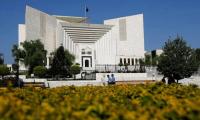KARACHI: Bank lending to the private sector increased by 77 per cent in the last fiscal year that ended on June 30, indicating rising demand as Pakistan’s economy recovers.
According to the latest figures from the State Bank of Pakistan, bank credit to the private sector increased to Rs368.4 billion between July 1, 2023 and June 28, 2024. These loans stood at Rs208.2 billion in the same period of the previous fiscal year.
Since FY23, the private sector’s loan growth has fallen due to record-high interest rates and weak economic activity. However, a significant drop in commodity prices decreased firms’ requirements for working capital, which in turn decreased their need for borrowing.
In contrast to the previous year, the private sector’s credit growth did, however, exhibit some improvement in FY24 as the country managed to achieve a modest economic rebound. Pakistan’s economy stabilized thanks to the government’s strict measures as part of the $3 billion loan programme from the International Monetary Fund (IMF), which ended in April of this year.
The country’s gross domestic product growth recovered to 2.4 per cent in FY24 after contracting by 0.2 per cent in FY23, largely due to strong growth in the agriculture sector. Due to stringent monetary and fiscal policies, GDP growth in FY25 is probably going to stay in the 2-3 per cent range.
The decline in the private sector’s credit growth was in part caused by banks’ persistent inclination to invest funds in risk-free government securities, even in the face of a decline in company demand for loans.
As Pakistan’s government spending needs increased, banks extended unprecedented loans totalling Rs8.564 trillion to the government in FY24. Comparing these loans to the corresponding period in the fiscal year 2023, there was a substantial increase of 130.46 per cent.
Outstanding bank credit to the private sector as a percentage of GDP stood at 9.0 per cent in FY24.Pakistan’s credit-to-GDP ratio has been steadily decreasing over the decades and is one of the lowest in the region, primarily due to the high interest rates, crowding out effects, energy crises, and banks’ preference to lend only to blue-chip corporates, according to the Pakistan Economic Survey 2023-24.
The economic survey stated that, from 2011 to 2020, Pakistan’s credit-to-GDP ratio was 15.2 per cent.Analysts cited signing a staff-level agreement for a new $7 billion loan programme with the IMF as a noteworthy and constructive step forward for the nation. Additionally, the onset of monetary easing brought on by a reduction in inflation pressures would encourage consumers and businesses to take out more bank loans to satisfy their needs.
According to economists, inflation should keep declining, opening the door for additional interest rate cuts to mid-double digits in FY25. The SBP reduced its key interest rate by 150 bps to 20.5 per cent last month.
US President Donald Trump signs an executive order on tariffs, in the Rose Garden at the White House in Washington,...
This representational image shows a person holding gold necklaces. — AFP/FileKARACHI: Gold prices fell by Rs5,500...
Britain's Chancellor of the Exchequer Rachel Reeves delivers her Spring Statement of the budget at the House of...
Power transmission towers are seen in Karachi on January 24, 2023. — Reuters LAHORE: A highly misunderstood issue...
An exterior shot of cinemas in Times Square in New York, October 18, 2006. —ReutersLAS VEGAS: Movie theatre owners...
A residential area in a housing society can be seen in this picture. — AFP/FileKARACHI: Pakistan is poised to emerge...







